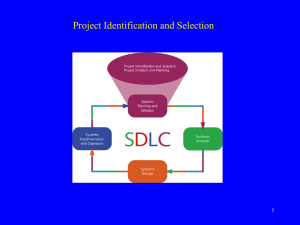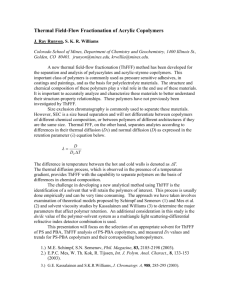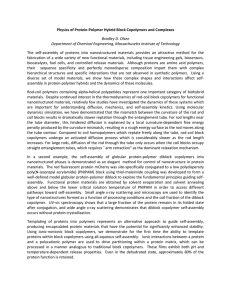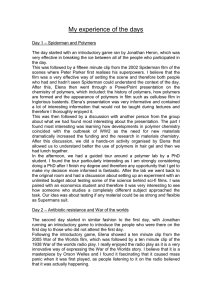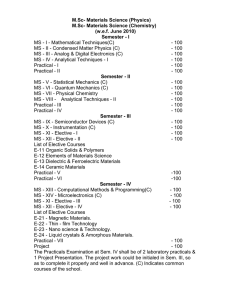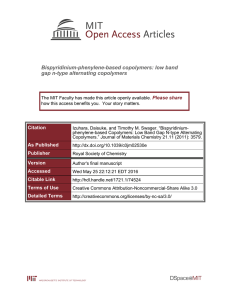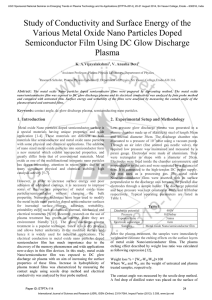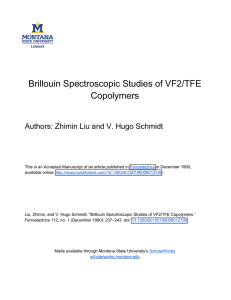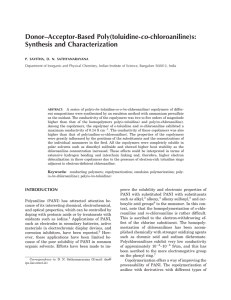Nanopatterning with Thin Polymer Films Gila Stein University of Houston
advertisement
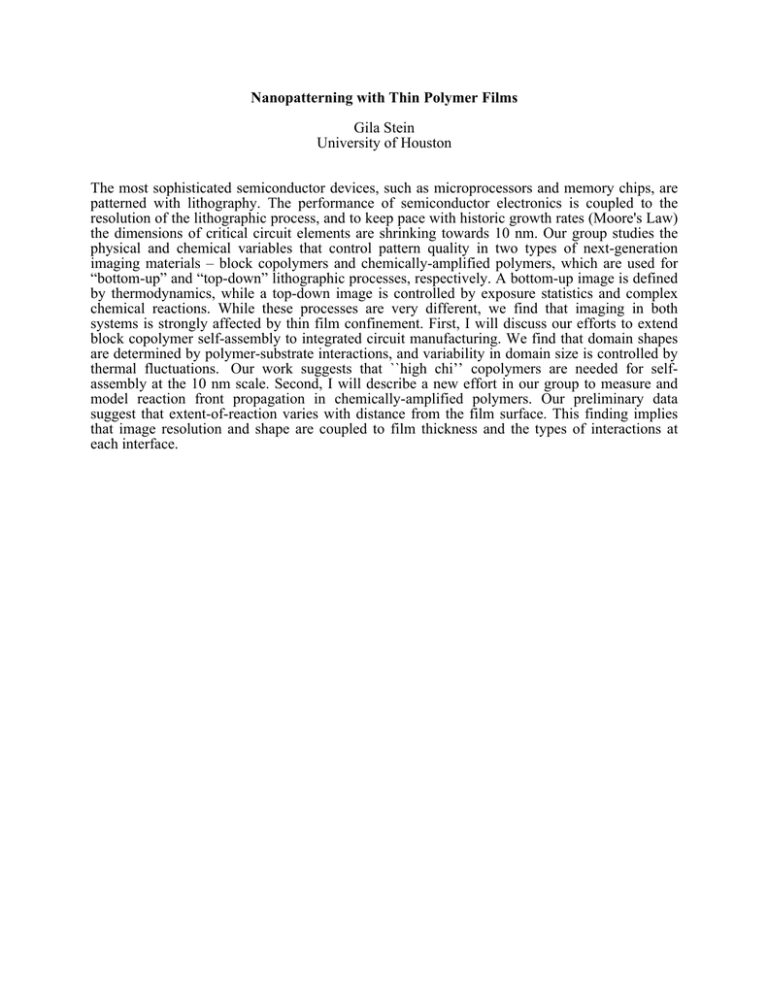
Nanopatterning with Thin Polymer Films Gila Stein University of Houston The most sophisticated semiconductor devices, such as microprocessors and memory chips, are patterned with lithography. The performance of semiconductor electronics is coupled to the resolution of the lithographic process, and to keep pace with historic growth rates (Moore's Law) the dimensions of critical circuit elements are shrinking towards 10 nm. Our group studies the physical and chemical variables that control pattern quality in two types of next-generation imaging materials – block copolymers and chemically-amplified polymers, which are used for “bottom-up” and “top-down” lithographic processes, respectively. A bottom-up image is defined by thermodynamics, while a top-down image is controlled by exposure statistics and complex chemical reactions. While these processes are very different, we find that imaging in both systems is strongly affected by thin film confinement. First, I will discuss our efforts to extend block copolymer self-assembly to integrated circuit manufacturing. We find that domain shapes are determined by polymer-substrate interactions, and variability in domain size is controlled by thermal fluctuations. Our work suggests that ``high chi’’ copolymers are needed for selfassembly at the 10 nm scale. Second, I will describe a new effort in our group to measure and model reaction front propagation in chemically-amplified polymers. Our preliminary data suggest that extent-of-reaction varies with distance from the film surface. This finding implies that image resolution and shape are coupled to film thickness and the types of interactions at each interface.
